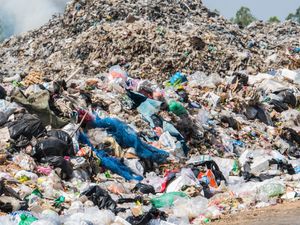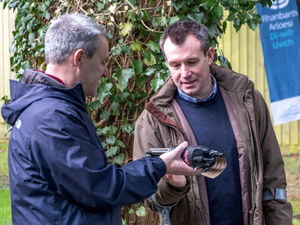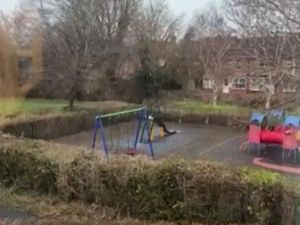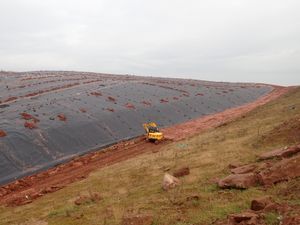The full story behind 'unacceptable' strange smell affecting residents in parts of Telford - and what's being done to stop it
The strange and unpleasant odour affecting residents of parts of Telford has been the subject of speculation and investigation in recent weeks.

At the start of the month the Environment Agency confirmed it was 'liaising' with the operators of the Granville Woodhouse Landfill site at Redhill, off Grange Lane.
Fast forward a few weeks and the watchdog has confirmed it has been conducting 'odour monitoring' around the site – operated by Potters Midlands – and accepted that the situation has "escalated" and is '"unacceptable".
The EA has delivered an update on the work taking place, the work that is planned to take place, and the background of how the site is licensed and operated.
The situation has also thrown a spotlight on the the amount of waste households generate and throw away, with the issues a timely reminder that everything we throw away goes somewhere – and just because it is out of sight does not mean it has disappeared for good.
How long has the landfill operated – and who licences it?
The Environment Agency has explained what can be buried at the site – non-hazardous and biodegradable waste – and how the operation is governed by a licence.
A spokesman said: "Granville Woodhouse Landfill has been operational at this location since 1991.
"The Environment Agency regulates the landfilling activities by way of an Environmental Permit.
"This permit contains conditions that control the operations carried out on site, ranging from the construction and design of a landfill cell; the types and volumes of waste that can be accepted; the emissions and their limits; and the frequency and type of environmental monitoring that is required.
"Environmental Permit conditions are in place to ensure operations at the site are carried out in a way that prevents or minimises emissions and impacts on the environment, using appropriate management systems.
"The Environmental Permit allows the site to accept a wide range of non-hazardous and biodegradable wastes."
What other limits are placed on the site – and who gave it permission?
There are a number of conditions about the operation of the site and what happens after it stops accepting waste.
The Environment Agency said that when it closes, restoration and re-profiling of the land will take place.
A spokesman said: "The local Planning Authority, Telford and Wrekin Council, gave approval for a landfill at this location.
"The planning permission restricts vehicle movements, operational hours, the area that can be infilled and the operational life of the site.
"It also requires the operator to comply with a previously agreed restoration plan to complete the landfill to a specific height and profile after it has been closed to accepting waste."
How does the landfill work?
The EA update explains where the waste goes – into 'individual cells' – and what happens once it is placed inside those cells.
It says: "Granville Woodhouse Landfill is heavily engineered and formed from individual cells.
"Each cell is constructed with a clay and geomembrane liner to protect the ground around and below that cell.
"Once the cell is full of waste, it is then capped.
"Initially this is temporary capping using a layer of clay over the surface of the cell.
"This is to help prevent rainwater entering the waste, stop the waste inside being disturbed and to enable the gases being produced to be captured.
"When the cell is complete then permanent capping is installed.
"As with the base of the cell, the capping must be designed to an engineered standard."
What are the likely sources of smell from a landfill site?
The EA has explained what can cause odours from any landfill site – but warns it is not always possible to get rid of every smell.
Its update said: "Odour sources from a landfill will be predominately from landfill gas created from the decomposition of the waste, as well as newly deposited materials on top of the waste mass, and delivery vehicles carrying waste to the site.





